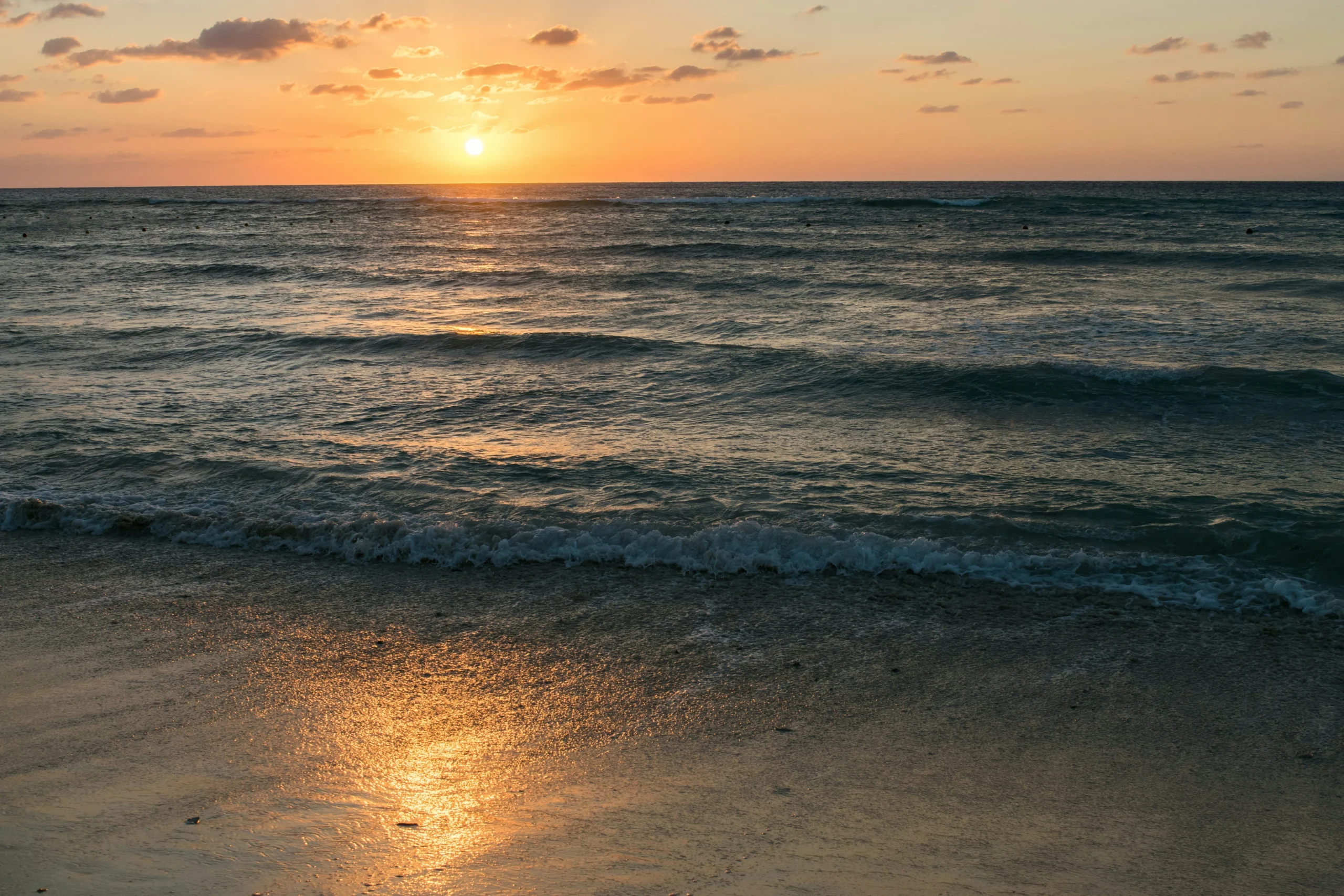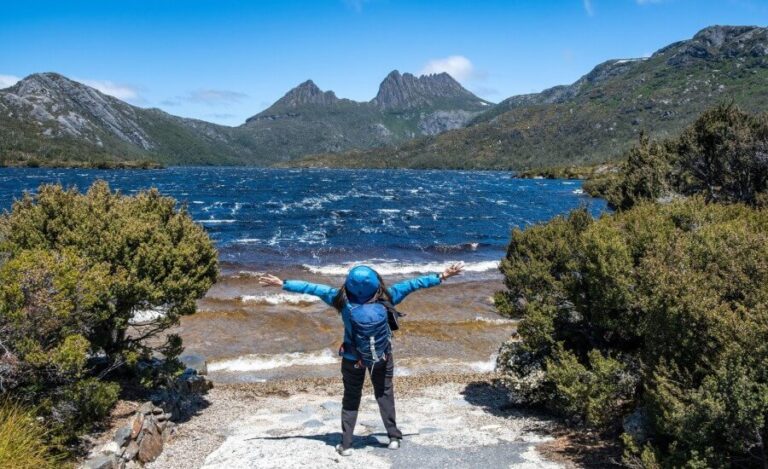
Imagine standing on a beach. Feel the sand between your toes, hear the rhythmic crash and sigh of the waves, smell the salty air, witness the vast expanse where sea meets sky. Beaches are places of profound meditation, mindfulness, beauty, escape and natural power. But increasingly, this idyllic image is fractured by the harsh reality of human impact – colourful plastic fragments mingling with shells, discarded fishing nets tangled in seaweed, wrappers and bottles littering the high tide line. Witnessing this can evoke sadness, anger, even a sense of helplessness. The problem feels overwhelming, our individual capacity insignificant against a global tide of waste.
But what if confronting this reality, not by turning away, but by taking direct, physical action, could be transformative? What if the simple act of bending down, picking up a piece of trash, and removing it from this precious ecosystem could be more than just environmental stewardship? This guide explores Transformative Beach Cleans: Restore Nature & Inner Peace, reframing beach cleanups not merely as a chore or obligation, but as a powerful, mindful practice that cleanses our shores while simultaneously calming our minds, fostering connection, and cultivating a profound sense of purpose and hope.
The Plastic Tide: Understanding the Crisis on Our Coasts

Before we delve into the mindful aspect, it’s important to acknowledge the scale of the challenge beach cleans address. Our oceans are facing an unprecedented crisis due to pollution, primarily plastics. It’s estimated that millions of tons of plastic enter the marine environment each year, breaking down into smaller microplastics, harming wildlife through ingestion and entanglement, contaminating ecosystems, and even entering our own food chain. Beaches act as filters, collecting vast amounts of this marine debris carried by currents and tides, alongside litter left directly by visitors.
This isn’t just an aesthetic issue; it’s an ecological catastrophe impacting marine biodiversity, coastal economies, and potentially human health. From tiny nurdles (pre-production plastic pellets) to large ghost nets (abandoned fishing gear), the variety of trash found is staggering. Seeing this firsthand during a beach clean can be shocking, driving home the reality of our consumption patterns and waste management challenges far more effectively than reading statistics alone. Understanding the ‘why’ behind the cleanup fuels the intention and adds weight to the positive action being taken. While cleanups don’t solve the root cause (overproduction and consumption of single-use plastics), they are a critical intervention, preventing further harm and raising vital awareness.
More Than Tidying Up: Beach Cleaning as a Mindful Practice

While the environmental outcome is vital, the process of beach cleaning offers a surprising pathway to mindfulness and inner calm. Approached with intention, it transforms from a simple task into an active meditation, grounding you firmly in the present moment.
Repetitive Motion as Mantra: The physical act of walking, scanning the sand, bending, picking up, and bagging is inherently repetitive. Like counting beads on a mala or focusing on the breath, this rhythmic action can quiet the discursive mind. The body is engaged in a simple, purposeful task, allowing thoughts to settle and a state of calm focus to emerge. Each piece collected becomes a physical anchor for your attention.
Engaging the Senses: A mindful beach clean involves fully engaging your senses. Feel the texture of the sand, the warmth or coolness of the air, the weight of the collected debris. Listen to the waves, the cry of gulls, the wind. Observe the colours and shapes – both natural (shells, seaweed, stones) and unnatural (the vibrant, jarring hues of plastic). Smell the salt air mixed, perhaps, with less pleasant odours of decaying waste. This sensory immersion pulls you out of internal chatter and into direct experience.
Cultivating Focused Attention: Searching for small fragments of plastic or debris embedded in the sand requires keen observation and focused attention. You learn to differentiate between natural objects and human-made waste. This practice of deliberate seeing mirrors mindfulness techniques that train the mind to notice details and sustain focus, strengthening your ‘attention muscle’.
Non-Judgmental Awareness: As you clean, you might find yourself making judgments – about the people who littered, about the scale of the problem, even about your own effectiveness. Mindfulness invites you to notice these thoughts and feelings without getting carried away by them. Acknowledge them, and gently return your focus to the task at hand: one piece of trash, one step at a time. It’s a practice in compassionate action.
Ripple Effect: Benefits for the Planet and Your Inner Peace

Participating in beach cleans creates positive ripples outwards, benefiting the environment, and inwards, enhancing personal well-being in numerous ways. It’s a powerful demonstration of how interconnected our inner and outer worlds truly are.
Tangible Environmental Impact:
- Direct Removal of Harmful Debris: Every piece of plastic removed is one less hazard for marine life. You prevent entanglement, ingestion, and the further breakdown of plastics into microplastics.
- Improved Habitat Health: Cleaner beaches are healthier habitats for coastal wildlife, including nesting birds and turtles.
- Data Collection: Many organized cleanups collect data on the types and quantities of trash found, contributing to scientific research and informing policy changes aimed at source reduction.
- Increased Awareness: Cleanups raise public awareness about marine pollution, inspiring others to reduce their own plastic footprint and potentially get involved.
Profound Personal Benefits:
- Sense of Purpose & Empowerment: Counteracts feelings of eco-anxiety and helplessness by providing a concrete way to make a positive difference. Taking action, however small, feels empowering.
- Connection with Nature: Spending time actively caring for a natural environment deepens your connection to it. You move beyond being a passive observer to an active steward.
- Community Building: Participating in group cleanups fosters a sense of community and shared purpose with like-minded individuals.
- Physical Well-being: Beach cleaning involves walking, bending, lifting – providing gentle physical exercise in a refreshing outdoor setting.
- Stress Reduction & Mood Boost: Altruistic activities, time in nature, physical movement, and mindful focus are all known to reduce stress and improve mood. Cleaning the beach can feel like clearing your mind.
- Cultivating Gratitude: Finding moments of beauty amidst the debris, or simply appreciating the clean stretch of sand you leave behind, fosters gratitude for nature and the positive impact of collective action.
Finding Calm in the Clean-Up: Unplugging for Presence

In our tech-saturated lives, beach cleanups offer a precious opportunity to intentionally unplug and immerse ourselves in the physical world. The nature of the activity itself discourages digital distraction and rewards full, embodied presence.
Hands-On, Screen-Off: You need your hands free for collecting trash, holding bags, and potentially using pickers. This makes constantly checking a phone impractical and counterproductive. It’s a naturally analog activity. Making a conscious decision to leave your phone silenced and packed away for the duration allows you to fully commit your attention to the task and your surroundings.
Direct Sensory Feedback: Unlike screen-based interactions, beach cleaning provides rich, direct sensory feedback. You feel the weight of the bag grow heavier, see the tangible results of your efforts on the sand, hear the satisfying crunch of removing a plastic bottle. This real-world engagement is grounding and far more rewarding than virtual achievements.
Mindful Observation, Not Documentation: While taking a ‘before and after’ photo or documenting unusual finds can be useful (especially for data collection), resist the urge to constantly photograph or video the process for social media. Prioritize the act of cleaning and observing over the act of documenting. Allow yourself to be fully absorbed in the rhythm of the work and the environment. The best memories are often the ones experienced directly, not through a lens.
Enhanced Connection: Without the intermediary of a screen, your connection – to the environment, the task, and fellow volunteers – becomes more direct and authentic. Conversations flow more easily, shared observations are richer, and the sense of collective effort is more palpable. It fosters human-to-human and human-to-nature connection.
Joining the Wave: How to Participate in Beach Cleans

Getting involved in beach cleaning is easier than you might think, whether you join an organized event or undertake a small cleanup yourself.
Finding Organized Cleanups:
- Environmental NGOs: Organizations like the Surfrider Foundation, Ocean Conservancy (organizer of the International Coastal Cleanup), local wildlife trusts, or marine conservation societies frequently organize public beach cleans. Check their websites or social media. (Note: Specific organizations may vary by region – a quick search for “[Your Region/Country] beach cleanup organizations” is recommended).
- Local Community Groups: Search online or on community notice boards for local environmental groups, “Friends of [Beach Name]” groups, or even dive centers that may organize underwater/beach cleanups.
- Corporate Volunteer Days: Some companies organize beach cleans as team-building or corporate social responsibility events.
- Check Local Event Listings: Local councils or tourism websites sometimes list community events, including cleanups.
Organizing Your Own (DIY) Clean:
- Choose a Location & Time: Pick a local beach you care about. Check tide times (low tide often reveals more litter).
- Gather Supplies: You’ll need sturdy gloves (reusable if possible), strong trash bags, potentially litter pickers (especially for safety with sharp objects), closed-toe shoes, sun protection, and water.
- Safety First: Be aware of potential hazards like sharp objects (glass, needles – use pickers!), hazardous materials (report these to authorities, don’t handle directly), unstable dunes, and changing tides. Don’t go alone to remote areas; inform someone of your plans. Wash hands thoroughly afterwards.
- Dispose Responsibly: Plan how you’ll dispose of the collected trash. Use designated beach bins if available and adequate. If collecting a large amount, you may need to coordinate with the local council for pickup or take it to a waste management facility. Separate recyclables if local facilities allow.
- Small Scale Counts: Even spending 15-20 minutes collecting litter during your regular beach walk makes a difference! This is often called a ‘2-minute beach clean’.
The Mindful Clean-up: A Step-by-step Approach to Presence

Transform your beach clean into a truly mindful practice with this approach:
- Set Your Intention: Before you begin, pause. Take a few deep breaths of sea air. Set an intention – perhaps to be fully present, to act with compassion for the environment, or to cultivate gratitude.
- Ground Yourself: Feel your feet on the sand or pebbles. Notice the connection to the earth. Briefly scan your body and release any tension.
- Engage Your Senses: As you start walking, consciously tune into your senses one by one. What colours dominate? What sounds are near and far? What can you smell? Feel the breeze, the sun (or rain!).
- Walk Slowly, Scan Mindfully: Move at a relaxed pace. Let your eyes scan the area ahead and around you without straining. Notice both the natural elements and the litter.
- Bend with Awareness: When you spot trash, bend down mindfully. Notice the physical movement. Observe the object closely for a moment before picking it up – its colour, shape, material.
- Act with Purpose: Place the item in your bag with intention. Silently (or aloud) acknowledge this small act of care.
- Notice Your Thoughts & Feelings: As you work, thoughts and feelings (frustration, sadness, satisfaction) will arise. Observe them without judgment, like clouds passing in the sky. Gently return your focus to your senses and the task.
- Take Mindful Pauses: Occasionally, stop cleaning for a moment. Straighten up, look out at the ocean, take a few deep breaths. Appreciate the beauty that remains or the progress you’ve made.
- Connect with Others (If Applicable): If part of a group, engage in mindful conversation or simply appreciate the shared quiet effort.
- Conclude with Gratitude: When finished, take a moment to appreciate the cleaner space, your own efforts, the efforts of others (if in a group), and the beauty of the coastal environment. Acknowledge the impact made, however small it feels relative to the scale of the problem.
Common Concerns & Solutions for Beach Clean Volunteers

It’s natural to have concerns when facing the reality of beach pollution and engaging in cleanups. Here are some common ones:
Concern 1: The problem is so huge; my small effort feels insignificant.
- Solution: Reframe significance. While one person cannot clean the entire ocean, every single piece removed matters to the wildlife that might have encountered it. Your action inspires others and contributes to collective data and awareness. Focus on the tangible difference you are making in that specific place, at that specific time. It’s about progress, not perfection.
Concern 2: Is it safe? What about hazardous items?
- Solution: Safety is paramount. Always wear sturdy gloves and closed-toe shoes. Use litter pickers for sharp objects (glass, metal, potential needles). Never touch syringes or potentially hazardous materials – report them to event organizers or local authorities. Be aware of tides and weather conditions. Don’t clean alone in very remote areas.
Concern 3: What do we do with all the trash collected? Especially large or unusual items?
- Solution: Organized events have waste disposal plans. For DIY cleans, use public bins if the amount is small. For larger amounts, contact your local council’s waste management department beforehand to ask about disposal options or scheduled pickups. Separate recyclables if possible. Large items like nets might require reporting to authorities for removal.
Concern 4: I don’t live near a beach / I don’t have time for big events.
- Solution: The principles apply anywhere! You can do mindful ‘litter picks’ in local parks, riversides, or even urban streets. Every bit helps. Even a 10-minute cleanup during a walk makes a difference. Focus on incorporating small acts into your existing routine.
Before You Go Checklist: Beach Clean Participation

Be prepared for a safe, effective, and mindful beach clean:
- Find Your Clean: Locate an organized event OR choose your DIY location/time.
- Check Weather & Tides: Dress appropriately and know the tide schedule.
- Essential Gear:
- Sturdy Gloves (reusable if possible)
- Strong Trash Bags (bring extras)
- Closed-Toe Shoes
- Sun Protection (hat, sunscreen, sunglasses)
- Water (in a reusable bottle!)
- Hand Sanitizer
- Recommended Gear:
- Litter Picker (especially important for safety)
- Small First-Aid Kit
- Snacks (in reusable containers)
- Rain Gear (if necessary)
- Safety First: Review safety guidelines (sharp objects, hazardous materials). Inform someone of your plans if going solo DIY.
- Disposal Plan (for DIY): Know where/how you will dispose of collected waste responsibly.
- Tech Status: Phone charged for emergencies, but silenced and stored away during the clean.
- Mindset: Intention set for presence, mindful action, and non-judgment. Ready to embrace the process.
Restoring Beaches, Renewing Ourselves

The state of our beaches reflects the state of our relationship with the planet, and often, with ourselves – marked by consumption, disconnection, and sometimes, despair. But Transformative Beach Cleans offer a powerful antidote. They invite us to step out of passive observation and into active participation, transforming helplessness into hopeful action. By mindfully engaging our hands and senses in the physical act of restoring a small patch of coastline, we do more than just remove litter. We reconnect with the natural world, cultivate inner calm, build community, and affirm our capacity to make a positive difference.
You’ve explored the crucial ‘why’ behind beach cleans, discovered the profound benefits of approaching this work as a mindful practice, and learned how to get involved safely and effectively. You understand that the true transformation lies not just in the cleaner sand left behind, but in the presence, purpose, and peace cultivated within. The rhythmic motion of cleaning becomes a meditation, the focus on the task a pathway to clarity, the connection with nature a source of profound well-being.
Will you join the movement to heal our shores and, in doing so, perhaps heal something within yourself? Seek out a local beach clean, or simply dedicate ten minutes of your next coastal walk to mindfully collecting what doesn’t belong. Feel the sand, hear the waves, engage your hands, and contribute your presence. One piece of plastic, one mindful breath, one conscious step at a time – this is how we restore our beaches and renew ourselves. The tide is turning, and your participation matters.






